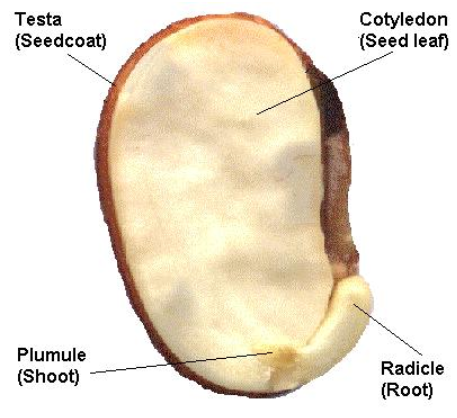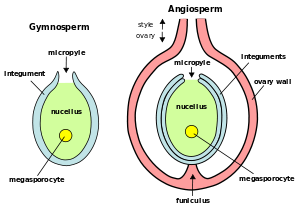A seed is an embryo surrounded by nutritive tissue and developed by a seed coat. An immature seed before fertilization is called an ovule. A typical seed consists of three parts, namely the embryo, a supply of nutrients for the embryo, and a seed coat.

Seed development.
This is a process that occurs from ovule fertilization to physiological maturity. In flowering plants, the process begins with double fertilization, where the fusion of two male gametes with the female gamete and the central cell to form the primary endosperm and the zygote occurs. The zygote right after fertilization is dormant while the endosperm rapidly divides into endosperm tissue, used as food until the roots develop after germination.
The ovule.
The ovule develops into seeds after fertilization and consists of several components:
- Funicle/seed stalk- attaches the ovule to the placenta hence the ovary wall at the pericarp.
- Nucellus- the remnant of the megasporangium and it’s the main region where the megagametophyte grows.
- Micropyle- the pore in the apex of the integument of the ovule where the pollen tube enters for the fertilization.
- Chalanza-where integument and nucellus are joined together at the base of the ovule opposite the micropyle.
The shape of the ovule usually determines that of the seed. Generally, there are four shapes, namely:
- Anatropous- this is the most common with a curved shape.
- Orthotropous- the ovules are straight with all the parts lined up in a long row hence an uncurved seed.
- Campylotropous- the seed is C shaped because the ovules have a curved megagametophyte.
- Amphitropous- the ovule is partly
 inverted turned back 90 degrees on its funicle.
inverted turned back 90 degrees on its funicle.
Embryo.
The main components are:
- Cotyledons, which maybe monocotyledons or dicotyledons. These are the seed leaves attached to the embryonic axis. They are a source of nutrients in non-endospermic dicotyledons hence are thick.
- Epicotyl, which is the embryonic axis above the point of attachment of cotyledons.
- Plumule, the tip of epicotyl. It has a feathery look because of young leaf primordia at the apex and becomes the shoot after germination.
- Radicle, which grows into the primary root and it’s the basal tip of the hypocotyl.
Seed coat.
The seed coat develops from the two integuments of the ovule. The inner integument forms the segment while the outer forms the testa — the funiculars abscesses forming an oval depression called hilum.The seed coat can be paper-thin e.g., peanuts or thick and hard e.g., coconut. It helps protect the embryo from injury, predators, and drying out.
Formation of fruit.
The ovary of a flower develops into a fruit after fertilization. Fruits are usually sweet; however, not all are. Flowers that do not undergo fertilization do not produce fruits.
Types.
- True fruits. These develop from the ovary.
- Accessory fruits. These develop from other parts of the female gametophyte.

